The philodendron silver sword has a unique appearance that is sure to turn heads. Of course with a plant so rare and so gorgeous, you’ll want to make sure you are providing it with the best possible care.
Read on to learn more about the silver sword philodendron and how to care for it in this care guide.
Table of Contents
Silver Sword Philodendron Background
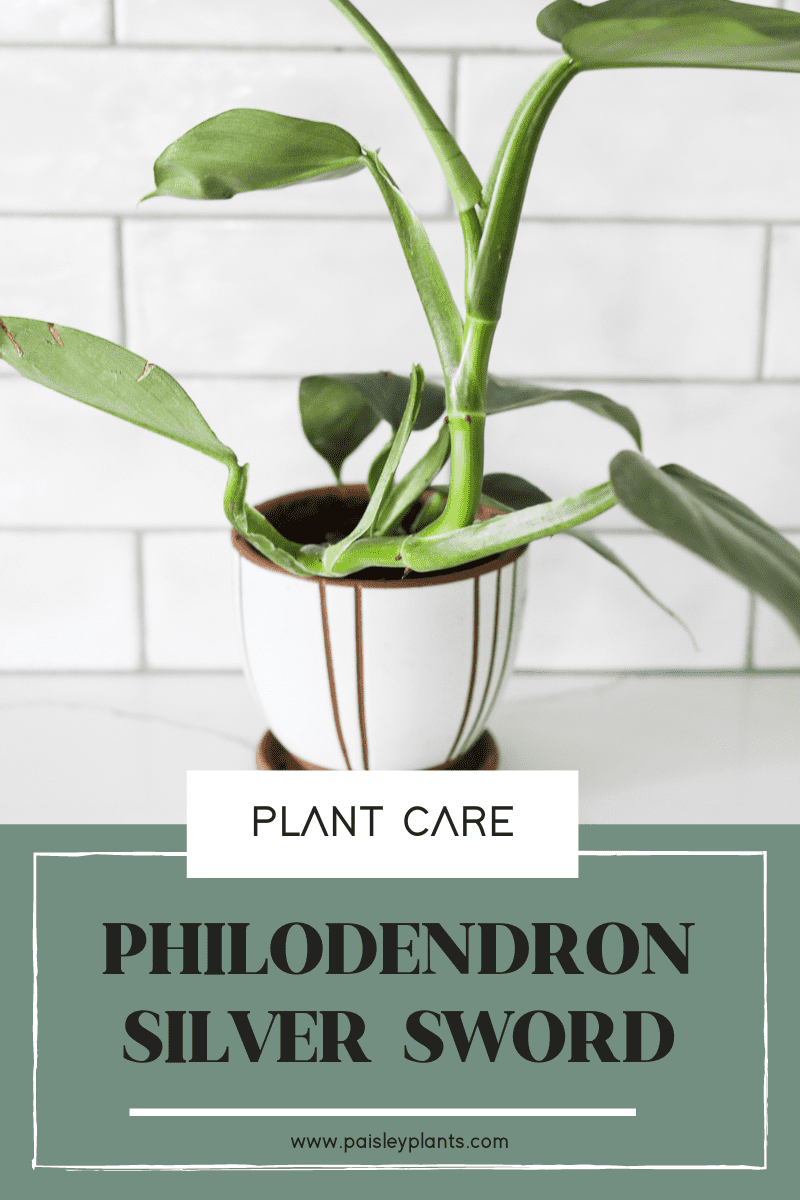
This post includes affiliate links.
The Philodendron hastatum, or more commonly known as the silver sword, is a species of the philodendron genus that is native to Brazil. The silver sword is classified as an endangered plant, combined with its immense beauty, it is a rare find that plant collectors strive to own.
As their name suggests, the silver sword philodendron plant earns its name from its leaves which are a striking metallic silver. The silver sword is a sizable plant, reaching a length of over 10 feet long at full maturity.
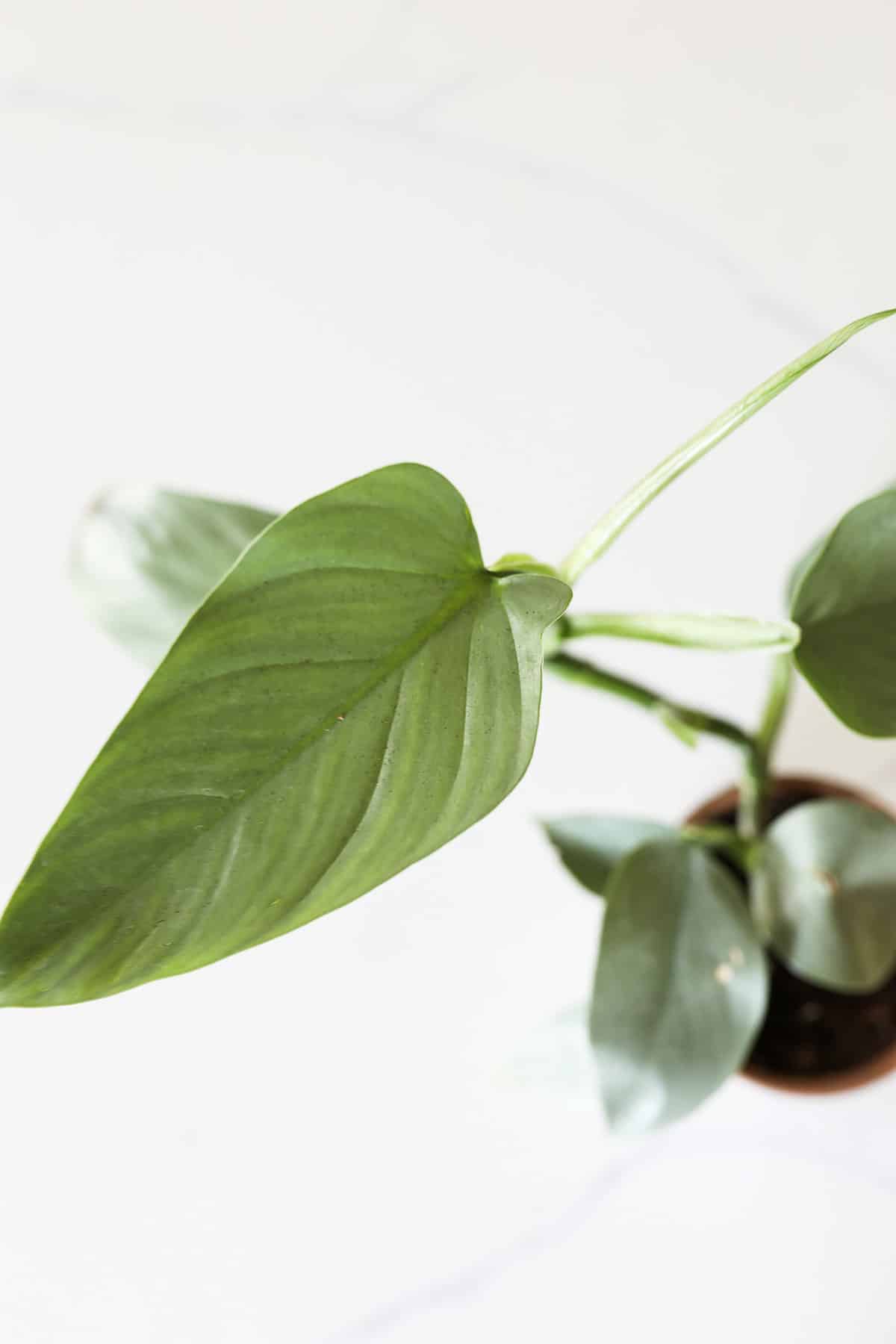
While the silver sword plant is gorgeous, it is toxic to pets and humans, as with all other philodendrons. It’s advised to take great precautions and keep this plant out of reach from any curious children or animals.
Here we have some non toxic plants that are safe to keep around little ones and furry friends!
Philodendron Silver Sword Care
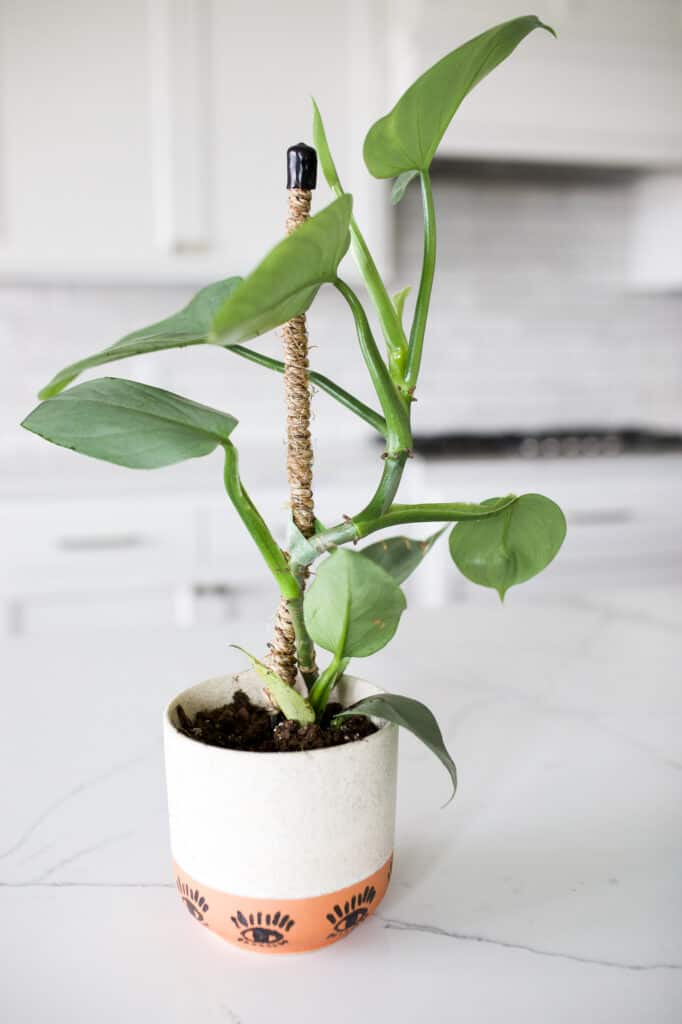
Sun & Light
Philodendron silver swords thrive under bright indirect light. While some direct sunlight is permitted, it’s not recommended to give your silver sword plant too much direct light as this can negatively affect the leaves of the plant.
Soil Type
When selecting a soil for your silver sword philodendron, there are three very important requirements to keep in mind: drainage, water retention.
You want your soil to be well-draining, yet still be able to hold enough moisture to keep your plants nourished. In addition, the soil must be slightly acidic, with a pH range of around 5.0 to 6.0
An aroid potting mix would be the most suitable option for your philodendron. Aroid mixes provide the best drainage and water retention that your philodendron needs to thrive. You can curate your own potting mix by combining equal parts soil, perlite, and orchid bark.
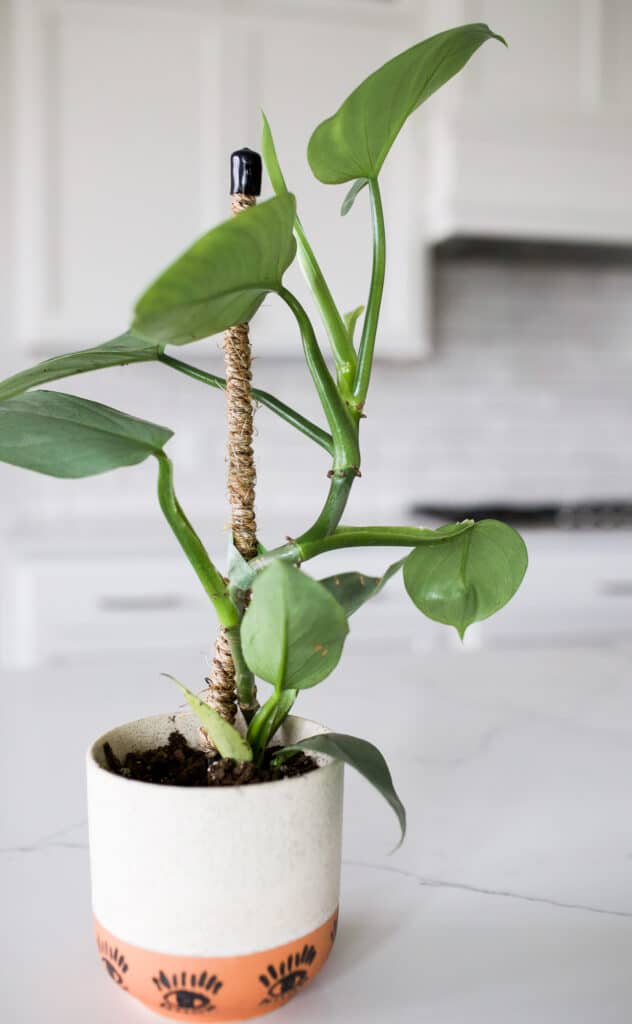
Water
In general, philodendrons are not fussy when it comes to a water schedule, and the silver sword is no different. The silver sword plant enjoys a soil that is lightly moist.
A good rule of thumb when tending to this plant is to allow the soil to nearly dry up before you go to water it again.
Fertilizer
While fertilizer isn’t always necessary, it is an extremely useful tool in encouraging vigorous growth for your plant. Fertilizer should only be applied during the spring and summer months when your philodendron is actively growing.
Using a balanced houseplant fertilizer, apply it once a month; always remember to carefully follow the package instructions as to not accidentally damage the plant.
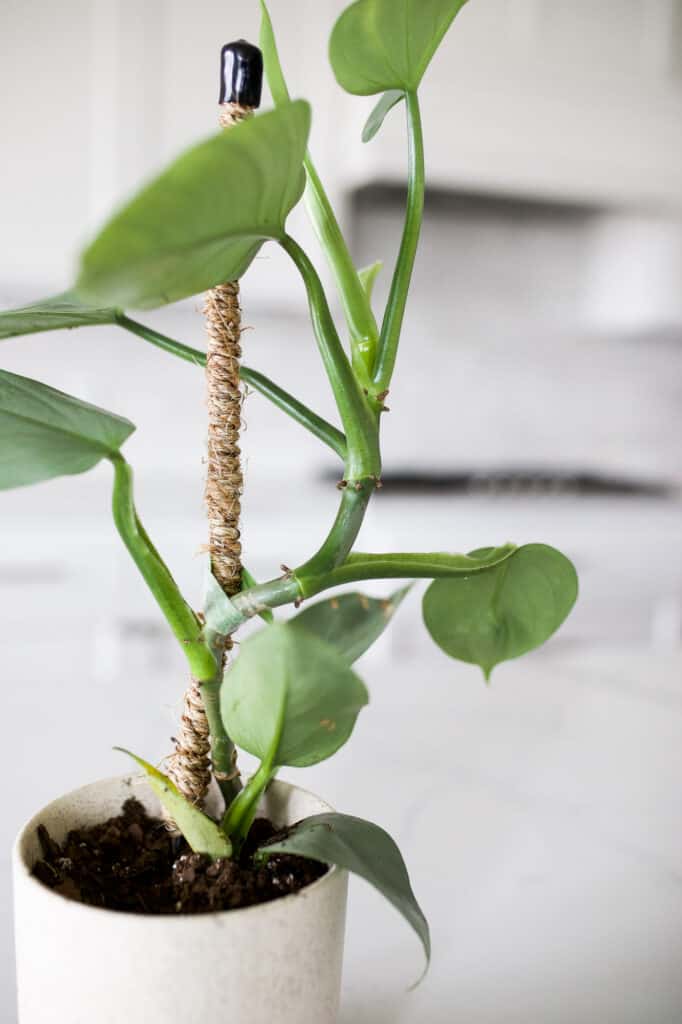
Temperature & Humidity
Philodendron plants thoroughly enjoy warm, humid air conditions which mimic their natural habitat. As far as temperature goes, it is important to avoid letting the air temperatures dip lower than 60° F. The most ideal range would be somewhere in the ballpark of 70° to 80° F.
While the silver sword will tolerate the average household humidity levels, it is best to keep the humidity within the 40% to 60% range to keep your plant happy.
Pruning & Maintenance
Due to the fast growth rate of this particular plant, many plant owners prefer to prune their silver sword in order to control its length and appearance. In addition, regular pruning also assist in promoting bushier growth and more leaf development.
Always make sure to use clean shears when cutting into your plant to avoid the possibility of spreading unwanted disease. We recommend starting with any leaves that are dead or damaged before proceeding with cutting off healthy segments of your plant.
Choosing a Container & Repotting a Silver Sword Philodendron
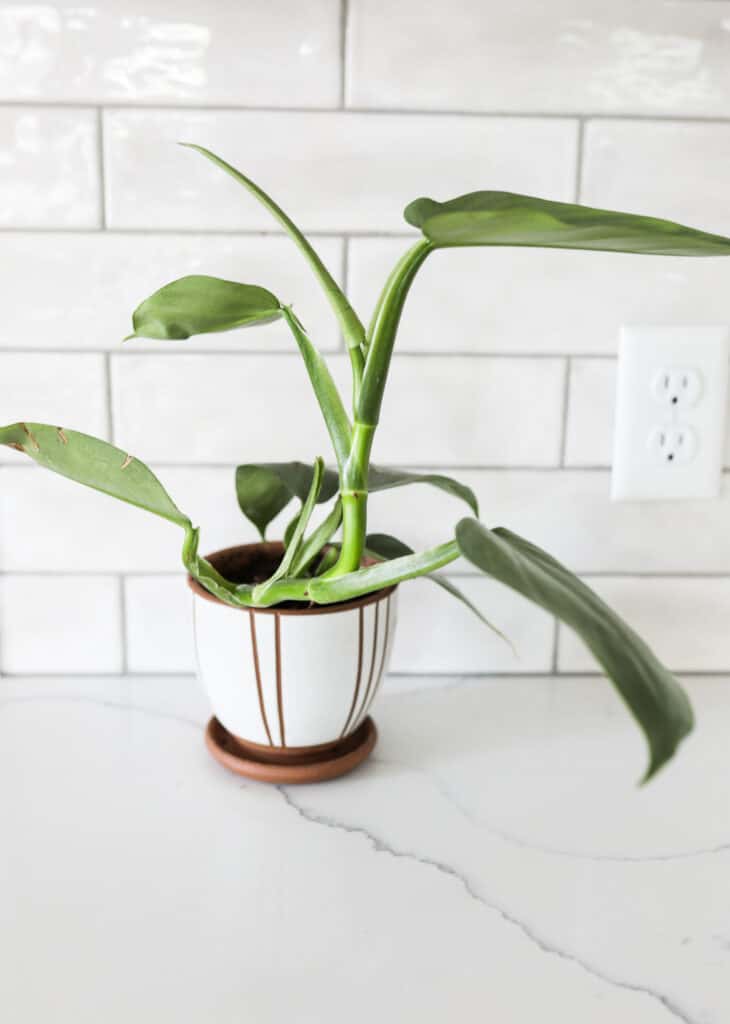
When selecting a container to house your silver sword philodendron plant, it is important to ensure that you are choosing a container with adequate drainage.
The plant pot must have multiple drainage holes to allow excess moisture to escape from the pot, otherwise you may run the risk of over-saturating your plant’s soil with water. Too much moisture with not enough drainage is the leading cause of fungal diseases.
Because the silver sword is a fast grower, you may have to repot your philodendron rather frequently; expect to repot your plant every 1 to 2 years, or earlier if you notice roots beginning growing from the drainage holes.
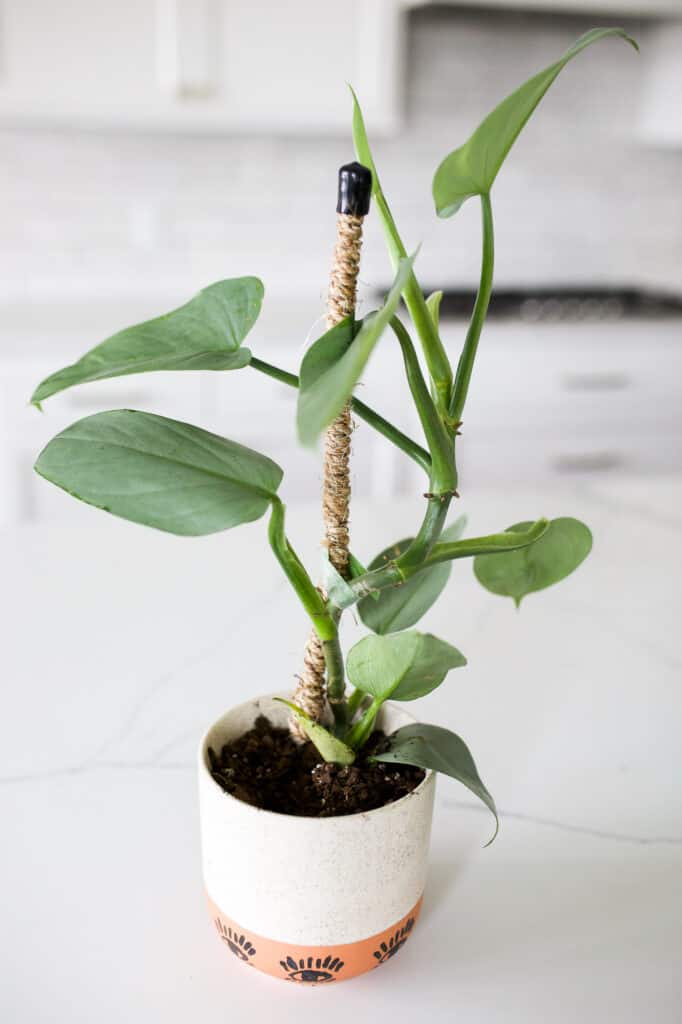
When you do repot your philodendron, it is important to size up your plant pot very gradually, selecting a pot that is only a few inches larger than the previous to give it room to grow and to guide the roots up and away from one another.
The plant you see in this post is my plant. I had to size up pots about 6 months after getting it. I kept it in the same size pot that the nursery I got it from had it in. After about 6 months I could see roots popping out from the top so I sized it up to a new pot.
The pot I chose was just slightly larger as you can see. Sizing up to a pot that is too large can be counterproductive and cause your plant to go into shock.
How to Propagate Philodendron Silver Sword Plants
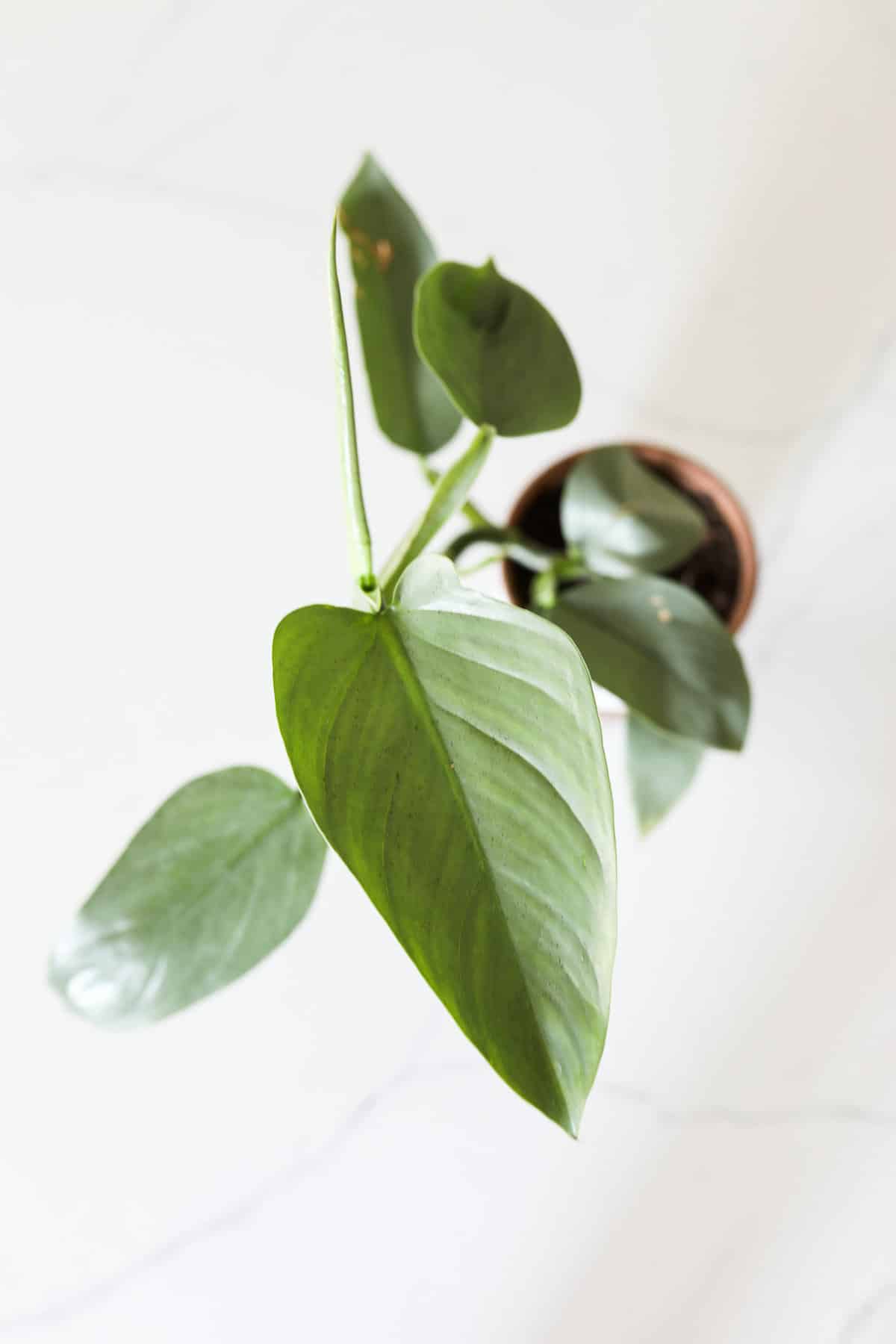
The easiest way to propagate a silver sword philodendron is by propagating the stem cuttings. If you look closely enough, you may notice aerial roots forming on the stems of your philodendron; these may appear to be small nodules protruding from the stem.
We use these aerial roots to propagate silver sword philodendrons and create a copy of the plant.
Follow these steps for a successful propagation:
- Locate an area of the plant that contains aerial roots. This segment should be completely healthy and have no obvious signs of damage. Make a cut just below the roots.
- Trim the stem cutting to prepare it for propagation. Prune the bottom few leaves, but make sure to leave 1 to 3 leaves intact at the top of the cutting.
- Fill a jar (or one of these cute propagation stations) with water and place the cutting into the jar. Ensure that the remaining leaves sit above the rim of the glass to allow for airflow.
- Place the jar in a location with bright, indirect light and switch out the water once a week.
- Within a few weeks, you should notice additional root growth taking place. Do not transplant the cuttings until these roots are at least 1 inch long to give it structure.
- Transfer the cutting into a plant pot with moistened soil. Keep the soil consistently moist and water it for the next few weeks while the cutting becomes adjusted to the new environment. After a few weeks, you may water it less frequently.
Common Philodendron Pests
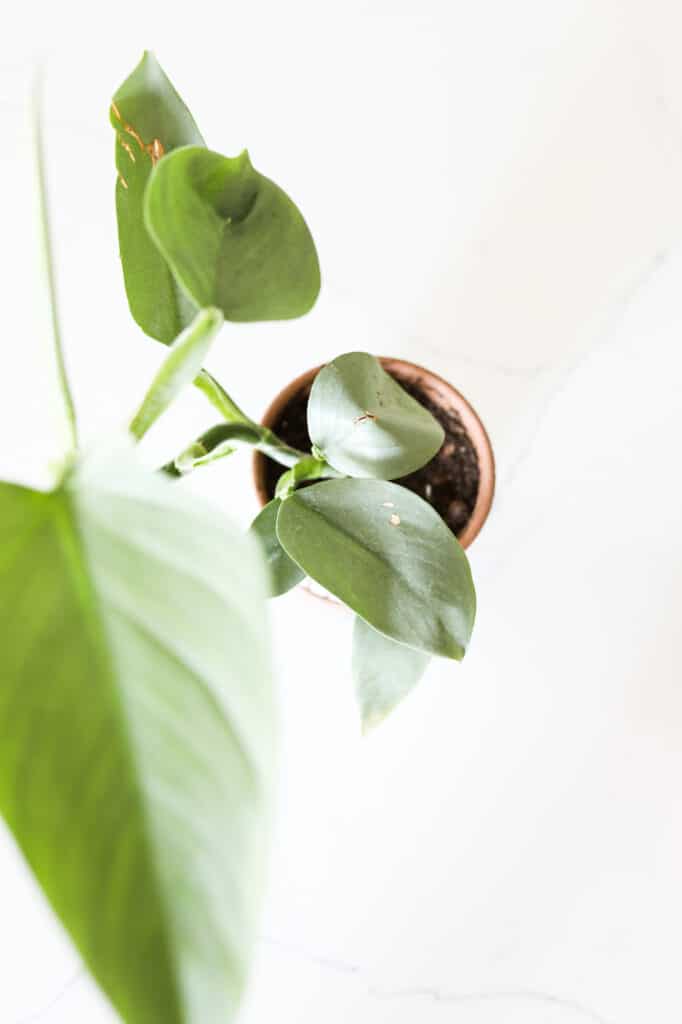
Luckily for plant owners, the philodendron silver sword is fairly resistant to pests and as long as you keep your plant healthy, there should be no run-ins with any unwanted guests. However, incidents do happen where you find pests attacking your plant.
Common household pests include aphids, mealybugs, or spider mites. Fortunately, all three of these pests can be effectively exterminated using natural methods.
When it comes to silver sword philodendron care, many plant owners swear by using neem oil to control their pest problem. Neem oil is a natural horticultural oil that acts as a natural pesticide at an affordable price point that can be found on Amazon or at your local plant shop.
Wipe your plant’s foliage with neem oil to stop the pests in their tracks; you may have to repeat this process twice or thrice in order to fully eradicate the pests.
The mealybugs leave behind a trail of sticky cotton-like residue which can be easily wiped off of the plant by using a cotton ball and soaking it in rubbing alcohol.
Below is a photo of what mealy bugs look like.
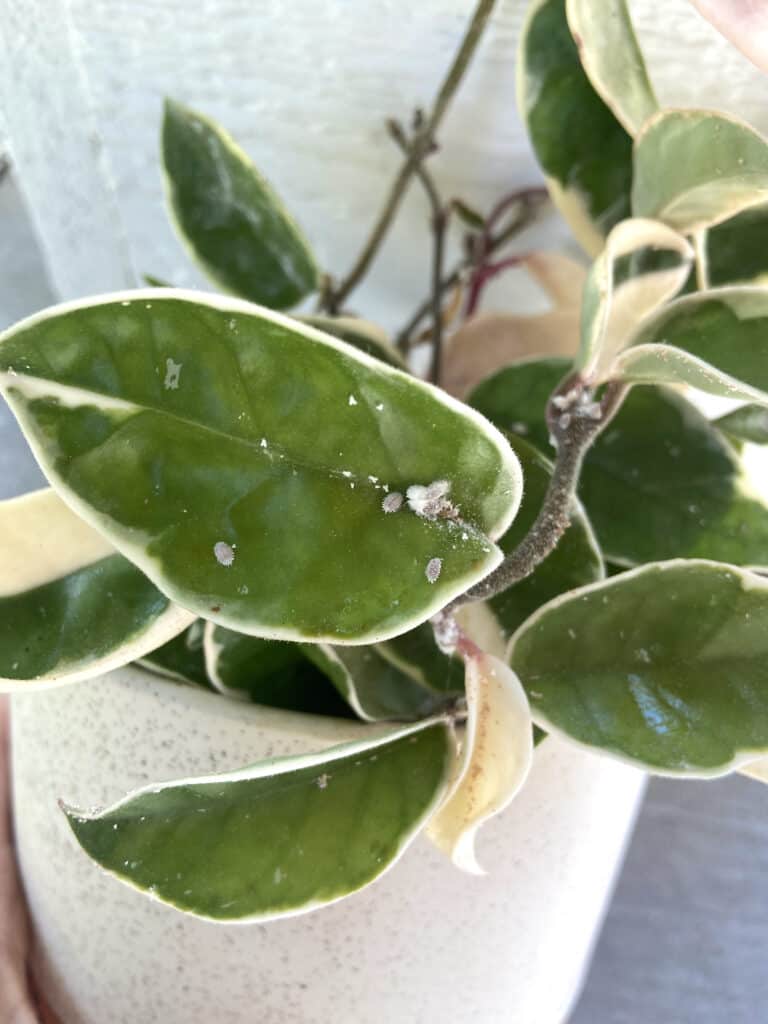
Search for any foliage that has been damaged due to pests should be pruned away to help encourage new, healthy growth on the plant.
Common Diseases
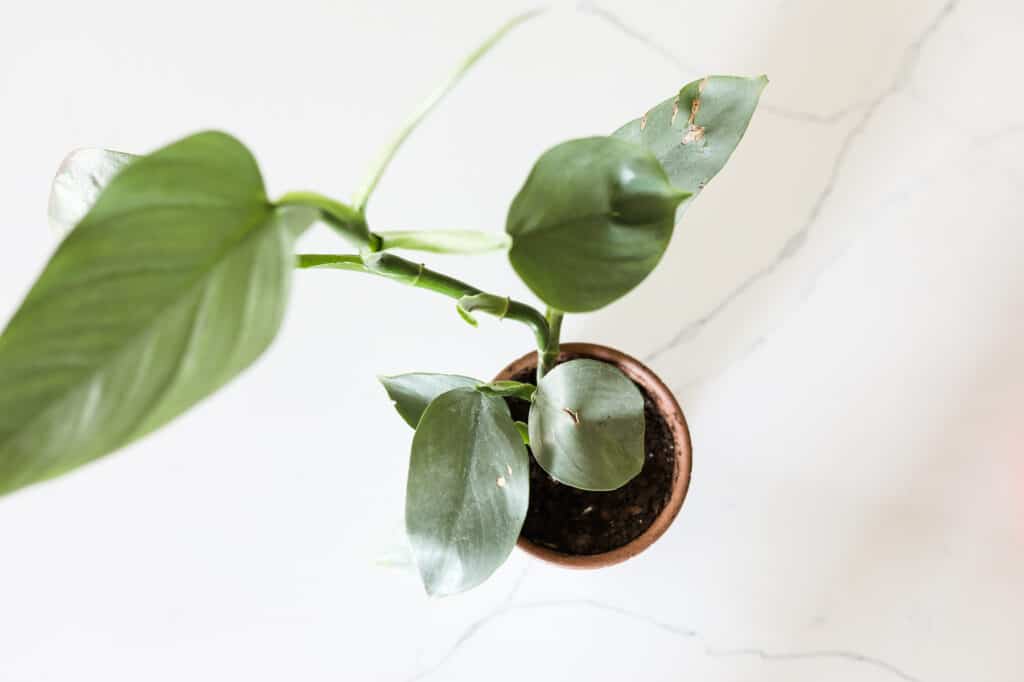
One of the most common diseases associated with this philodendron plant is root rot. Root rot is the result of too much moisture combined with insufficient drainage.
Excess water becomes trapped within the root system, which can turn into fungus that kills roots. Signs of root rot include wilting, discolored foliage. With swift action, the effects of root rot can be reversed.
Follow these easy steps to heal your plant from root rot.
- Remove your philodendron from its pot and gently brush away any dirt to reveal the roots. Take a look at the root system on the plant; healthy roots are firm and off-white in color, whereas rotted roots are mushy and blackened.
- Using your pruning shears, cut off any rotted roots you can find, leaving behind the healthy ones.
- When all is cleared away, repot your plant using fresh, well-draining soil and repot your plant in a cleaned pot with drainage holes at the bottom.
- Water your plant and keep the soil lightly moist, but not waterlogged for the next couple weeks to mitigate any transplant shock.
Silver Sword Philodendron FAQ
Yes, the philodendron silver sword is a very rare variety. They are considered an endangered species in their native habitat of Brazil, making this a very sought-after plant. If you are lucky enough to find a silver sword, they are very easy to propagate and multiply- talk about a silver lining!
With its climbing habit, the Silver Sword Philodendron can grow as high as 15 feet tall and would usually grow twice its size in its wild habitat.
This philodendron plant is relatively easy to care for, is not high-maintenance, and adapts to almost any indoor conditions. It follows typical watering requirements, is not very susceptible to pests, and prefers bright, indirect light like most indoor plants.
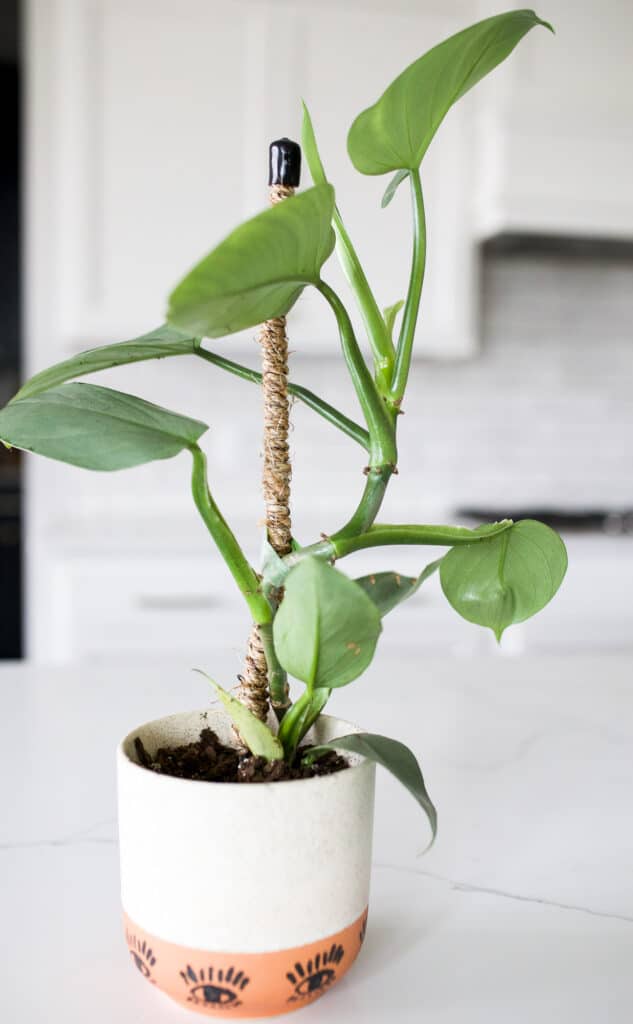
Where to Shop for a Silver Sword Plant
The philodendron silver sword is unlike any other in the philodendron plant species; its unusual metallic coloring makes for a delightful decoration in the home and looks great in photos.
After reviewing this helpful guide, you may be pleasantly surprised by how easy and low-maintenance the silver sword plant care routine is. If you are fortunate enough to find a silver sword, it will not disappoint and will make a great addition to your plant collection!
Love Philodendrons? We do too! Check out these other Philodendron care guides:

